5 Rules to Follow in a Lightning Storm
Mountain weather is known to change quickly and dramatically. One hour you’re hiking toward a summit in strong high-altitude sunshine, then the next, you’re zipping up a waterproof outer layer as ominous gray clouds converge and produce a clap or boom of thunder.
When you hear thunder, don’t wait for visual proof of forked lighting splitting the sky overhead to manage the risk of being struck. You can minimize the chance of a lightning injury by following these “rules” (explained below) during alpine excursions:
- Plan ahead to avoid or at least to mitigate the risk
- Seek safer terrain in a thunderstorm (lower elevation, away from exposed summits or ridgetops, and away from tall solitary objects and standing water)
- If you’re stuck on a high, exposed area, then crouch and minimize ground contact
- Drop your trekking poles and avoid other metal objects
- If you’re with a group, spread out about 20 feet from one another
You may see relatively clear sky or lighter-colored clouds in the direction you’re heading and conclude you don’t need to worry about lightning. But if thunder fills your ears, you’re hearing the sound that lightning makes—so lightning in fact is nearby and can travel to hit you.
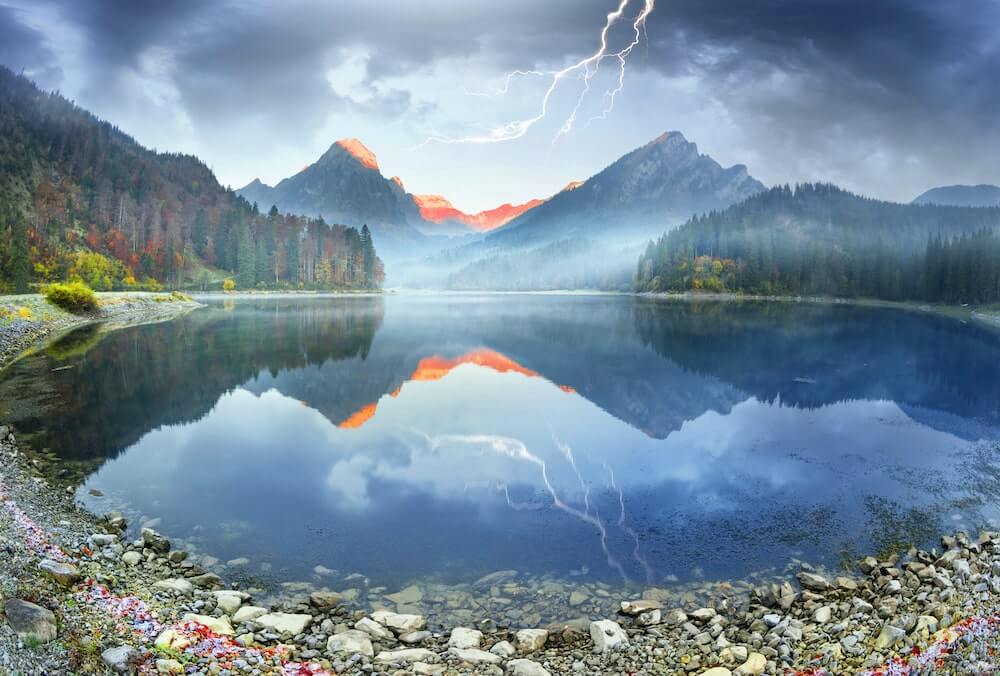
How Lightning Works
What’s going on when a storm builds and produces lightning and thunder? Basically, warm air from the earth’s surface is rising and interacting with ice forming in the clouds above, creating static electricity, which the atmosphere discharges. A negative charge in the sky seeks to connect with a positive charge from the ground, and the connection point often is a tall solitary object, such as a big tree or a pointy peak.
The result is a spectacular flash of electricity. That, in turn, creates a shockwave of sound we hear as thunder.
Here’s the good news: very few people are hit by direct lightning strikes—the kind of strike that zaps the top of a tree or touches a summit. And, few people are killed from lightning. In the United States, an average of 28 people died annually from lightning between 2006 and 2021, according to the Centers for Disease Control and Prevention.
The bad news: Lightning injures are severe. And you can be seriously injured or killed by ground current, which is voltage traveling through the ground from the strike point to where you’re standing or sitting. You also can be hurt or killed by “splash lighting” (a.k.a. a side flash), which is electricity jumping from one object (such as a tree or boulder) to you.
Plan Ahead to Avoid Thunderstorm Risks
Lightning hits people when they’re in the wrong place at the wrong time. So, learn about the region’s weather patterns, check the forecast, and then time your hikes to ascend peaks or traverse exposed ridges during good-weather windows, which usually occur early in the day. Also consider alternate routes to take at lower elevation if a storm develops.
If you’re stymied by a threatening storm, don’t let ego overrule good judgment—turn back and wait to tackle that stretch of trail. If you’re on an inn-to-inn hiking tour and the weather forecast looks questionable, talk to the lodge manager before you depart to see if you could return later that day in the event of dangerous weather.
Always pack warm, waterproof layers in case you must wait out a storm. If you must shelter in a grove of trees during a downpour and thunderstorm, for example, you could get soaked to the skin, and your body temperature would drop precipitously from lack of movement. Pack an emergency space blanket, an extra wool base layer, a lightweight poncho/rain jacket, hat and gloves, and perhaps hand warmers to prevent hypothermia.
Seek Safer Terrain
There’s a saying, “When thunder roars, go indoors,” because being outside is not safe in a thunderstorm. It’s best to seek shelter in an enclosed building or hard-topped vehicle with the windows up. (Open structures like porches don’t provide protection from lightning.)
If you’re hiking, you likely don’t have the option of closed shelters, so let’s review safer areas to go when thunder roars.
If you’re high on an exposed ridge or summit and see a storm building, alter your route, or turn back on the trail to get to lower, more protected elevation, such as in a grove of trees or in a low point between hills. A depression in the ground is a good spot, as is a dry ravine unless flash flooding is possible.
Avoid taking shelter near tall, solitary objects (such as under a single big tree). Also stay clear of standing water, such as ponds and puddles.
Minimize Ground Contact
If you’re stuck in an exposed, high area, and all your senses detect electricity in the air—your hair may even start rising from static electricity—then you’re in danger of being struck, and you must manage this worst-case scenario.
Don’t lie down! It’s a myth that lying down—getting as low to the ground as possible—will help. Rather, get in the lightning position (see illustration).

The most important aspects of the lightning position involve keeping your feet close together and keeping your hands from touching the ground. If you can balance on your forefeet with heels off the ground, that’s even better. Crouch down rather than stand (to reduce the chance that a direct strike or slide flash of current will hit you) and make your body into a small ball with head lowered. Clasp your hands over your ears to protect your hearing from thunder and to give you a place to put your hands.
If you become too fatigued to maintain the lightning position, then sit on your butt and hug your knees to your chest, with your feet and hands off the ground.
Staying in a crouched position with feet close together won’t protect you from a strike, but it will minimize the amount of ground current that flows through your body and can significantly reduce the severity of injury. By contrast, if you lie down and stretch out, with your limbs extending and touching different parts of the ground (as some people mistakenly do while taking shelter), then more electrical current will travel through your body, causing greater injury or even death.
Drop Trekking Poles and Other Metal Objects
When assuming the lightning position, you don’t need to chuck your metal trekking poles far away, but you should set them down a good distance from you in the worst-case scenario described above. The same goes with your backpack if it has a metal frame, and anything else metal, such as your smart watch and phone. Metal from poles, personal accessories, and fence wiring all can conduct ground current, so don’t touch these objects when lightning threatens to strike.
As unpleasant as it is to visualize, metal jewelry or belt buckles can burn your skin if lightning travels through you, so remove these objects too if time allows.
Spread Out from Others
If you’re with others, you should spread out from each other out to improve the odds that one or more of you will remain unharmed and be able to help if lightning hits the ground and the ground current travels to strike individuals.
“Like the lightning position, spreading a group out is a last-ditch move in a dangerous situation,” says Liza Howard, a wilderness safety expert who teaches wilderness medicine for the National Outdoor Leadership School (NOLS). She says how far you spread out depends on the terrain and the group’s ability to manage themselves.
“If someone doesn’t have rain gear, and splitting up means that person is going to become hypothermic, it makes more sense to stay together and share an emergency blanket. You do want to keep within hearing distance of everyone. If you can get 20 feet from the next person, great. Spreading out doesn’t make you more safe, it just makes it more likely that someone will be able to take care of someone else if they get hurt.”
If one of your buddies gets hit by lightning, he or she may suffer burns, seizures, hearing loss, or sudden cardiac arrest. It’s a myth that this person is full of electrical current and therefore unsafe to touch. A person shocked by lightning will not retain the charge, so give that person aid as soon as possible, such as warmth, wound care, or CPR if necessary.
Meanwhile, monitor the storm. Ideally, you should wait 30 minutes after the last thunderclap to start moving again on the trail. To stay warm, try exercises such as marching in place. If you’re with someone who’s injured, however, you may need to get moving to lower ground sooner and to call for help.
For more tips on staying safe while hiking, check out our blog: Wander Wise: A Guide to Safety on the Trails and Hiking Etiquette.
By Sarah Lavender Smith
Sarah Lavender Smith is a running coach, author and longtime trail runner who has competed in some of North America’s toughest ultramarathons. When not running or hiking, she often can be found on trails riding her horse. Sarah lives in Telluride with her husband and two kids. One of her proudest accomplishments is traveling nomadically around the world for a year with her family visiting five continents.


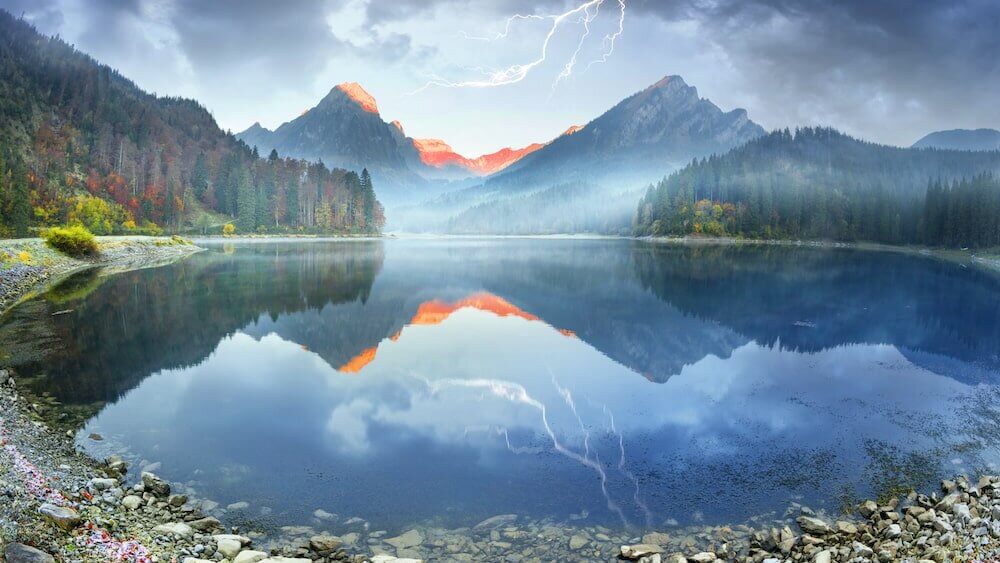


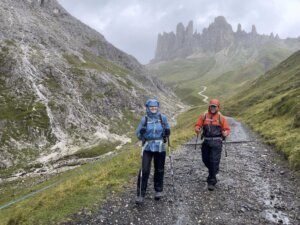



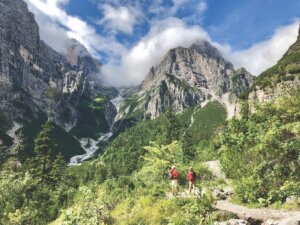
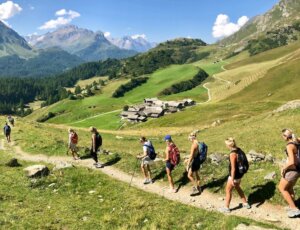



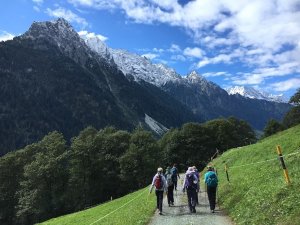







Comments are closed.